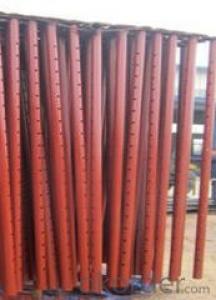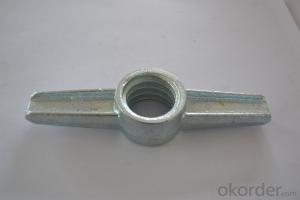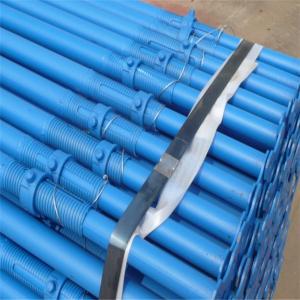OEM Two wing Butterfly Wing Nuts 13
- Loading Port:
- China Main Port
- Payment Terms:
- TT OR LC
- Min Order Qty:
- -
- Supply Capability:
- -
OKorder Service Pledge
OKorder Financial Service
You Might Also Like
Quick Details
| Model Number: | |||||
| Standard: | Type: | Certification: | |||
| Material: | Surface: |
Packaging & Delivery
| Packaging Detail: | Plastic bag, pallet packing, carton box, by customer's requirement |
| Delivery Detail: | within 30days after payment |
Specifications
Two wing Butterfly Wing Nuts
1>Excellent dimension accuracy
2>Finished: per your requirements
3>factory directly supply
Two wing Butterfly Wing Nuts
We supply kinds of metal parts totally according to clients' drawings and samples and special requirement.
1. Material: Ductile iron .
2. Sizes: Inner hole Dia 15/17mm.
We have different sizes ,types of wing nut to meet your needs, save your cost .
3. Weight: 0.35kg,thread pitch: 10.0mm.(or 6.35mm)
4. Surface: White Zinic , Yellow Zinic or painted, self color
5 Thread:casted or machine tap.
1. 12000M2 standard modern workshop guarantee production capability to satisfy the customers needs
2. Our Independent quality control department,Which make sure the quality of all products
3. Our efficient and experienced sales team ,provide friendly and thoughtful service for clients from all over the world
- Q: What are the guidelines for the proper storage and handling of steel props?
- The guidelines for the proper storage and handling of steel props include ensuring they are stored in a dry and well-ventilated area, away from moisture and corrosive substances. Props should be stacked vertically, with proper support to prevent deformation or damage. They should also be inspected regularly for any signs of wear, and damaged or faulty props should be immediately removed from use. Additionally, props should be handled with care, avoiding dropping or dragging them, and they should not be used beyond their specified load-bearing capacity.
- Q: Can steel props be used to support heavy machinery?
- Indeed, heavy machinery can be supported using steel props. Possessing strength and durability, steel props prove to be ideal for offering support and stability to heavy equipment and machinery. They find frequent application in construction sites, industrial environments, and various other scenarios where the burden of substantial loads necessitates support. The adjustable heights of steel props enable customization to suit the specific needs of the machinery being supported. Moreover, their installation and removal are effortless, ensuring flexibility and convenience. Ultimately, steel props emerge as a dependable solution to ensure the secure operation of heavy machinery.
- Q: Are steel props suitable for supporting temporary healthcare facilities?
- Indeed, steel props prove to be a fitting option for providing support to temporary healthcare facilities. These props, which are also referred to as adjustable steel props or acrow props, are commonly utilized in construction for the purpose of temporarily supporting structures or heavy loads. They are specifically designed to be adjustable in terms of height and offer dependable and robust support. In order to ensure the safety and stability of patients and staff, temporary healthcare facilities necessitate a secure and stable structure. Steel props can be employed to support various components of these facilities, such as walls, ceilings, and temporary partitions. They can also be utilized to reinforce preexisting structures in order to accommodate the weight and demands of healthcare equipment. Made from high-quality steel, these props deliver exceptional strength and durability. They are capable of withstanding heavy loads and are created to be resistant to corrosion and wear. As a result, they are well-suited for offering support to the temporary structures that are required for healthcare facilities. Additionally, steel props are adjustable in terms of height, which allows for flexibility during installation. This particular characteristic proves beneficial for temporary healthcare facilities, as they may require adjustments or reconfigurations based on evolving requirements or layouts. The ability to effortlessly adjust the height of steel props ensures the continued stability and security of the structure. Furthermore, steel props are relatively easy to both install and dismantle, making them a practical choice for temporary healthcare facilities. They can be swiftly set up and removed, minimizing disruptions to operations and allowing for efficient deployment in emergency situations. In conclusion, due to their strength, durability, adjustability, and ease of installation, steel props are a suitable option for supporting temporary healthcare facilities. They provide a secure and stable structure, guaranteeing the well-being of patients and staff in these paramount environments.
- Q: Can steel props be used in high-rise construction projects?
- Yes, steel props can be used in high-rise construction projects. Steel props, also known as adjustable steel props or steel shore, are commonly used in construction sites to support and stabilize temporary structures, including high-rise buildings. These props are made of high-quality steel, which provides them with the necessary strength and durability to withstand heavy loads and pressures. Steel props are adjustable in height, allowing them to be set at different levels to support the weight of the upper floors during construction. They are designed to transfer the load from the upper levels to the ground, ensuring the stability and safety of the structure. Additionally, steel props are easy to install and remove, making them a practical choice for temporary support structures in high-rise construction projects. The use of steel props in high-rise construction projects offers several advantages. Firstly, they provide a cost-effective solution as they can be reused in multiple projects. Secondly, steel props are versatile and can be easily adjusted or modified to accommodate different heights and loads. This flexibility is crucial in high-rise construction, where the height and load requirements can vary significantly from one floor to another. Lastly, steel props are known for their high load-bearing capacity, allowing them to support the weight of heavy construction materials and equipment used in high-rise projects. In conclusion, steel props are a suitable choice for high-rise construction projects due to their strength, adjustability, versatility, and cost-effectiveness. Their ability to support heavy loads and provide stability makes them an essential component in ensuring the construction of safe and structurally sound high-rise buildings.
- Q: What are the typical dimensions of a steel prop?
- The typical dimensions of a steel prop can vary depending on the specific manufacturer and the intended use of the prop. However, in general, steel props are commonly available in a range of sizes. The standard dimensions for a steel prop usually include a height that can vary from approximately 1.8 meters to 5 meters. The diameter of the steel tube used for the prop can typically range from 40mm to 60mm. The wall thickness of the tube is typically around 3mm to 5mm, providing enough strength to support the intended load. Steel props are often adjustable in height to accommodate different construction needs. They typically have a threaded screw mechanism or a pin and hole system that allows for easy height adjustment and stabilization. The adjustable range for the height can vary, but it is commonly between 0.5 meters to 1.5 meters. It is important to note that these dimensions are not set in stone and can vary depending on the specific requirements of the construction project or the manufacturer's specifications. Therefore, it is always advisable to check with the supplier or manufacturer to determine the exact dimensions of the steel props you require.
- Q: Are steel props commonly used in construction projects?
- Construction projects commonly utilize steel props. These props, also referred to as adjustable steel props or steel shoring props, function as vertical supports to temporarily bear loads during construction or renovation tasks. They find frequent application in projects necessitating vertical support, such as constructing walls, beams, columns, or floors. Steel props are favored in construction projects due to their robustness, longevity, and adaptability. Constructed from top-quality steel, they exhibit exceptional load-bearing capacity and compression resistance. Their adjustable feature facilitates ease in altering heights, providing flexibility and adaptability for diverse construction scenarios. Additionally, steel props can be reused, rendering them a cost-effective option for construction projects. Beyond their structural advantages, steel props also offer safety benefits. They supply stability and support, preventing the collapse or sagging of structures during construction, ensuring the safety of workers and the integrity of the building. Steel props commonly find application in both residential and commercial construction projects, including high-rise buildings, bridges, tunnels, and infrastructure development. In conclusion, the widespread use of steel props in construction projects can be attributed to their versatility, strength, and safety features. Their ability to offer temporary support while allowing for easy adjustment positions them as indispensable tools in the construction industry.
- Q: Can steel props be used for supporting temporary bridges during construction?
- Yes, steel props can be used for supporting temporary bridges during construction. Steel props, also known as adjustable steel props or scaffolding props, are commonly used in construction for providing temporary support and stability to structures. They are designed to bear heavy loads and can be adjusted to the required height, making them ideal for supporting temporary bridges. The steel props are typically placed under the bridge structure at regular intervals to distribute the load evenly and provide stability during construction. They can be easily installed and removed, allowing for efficient construction and safe support of the temporary bridge.
- Q: Can steel props be used for temporary support during roofing work?
- Indeed, temporary support during roofing work can be achieved by utilizing steel props. These adjustable and telescopic support systems are frequently employed in the construction industry to offer temporary support to structures or components. Designed to endure substantial loads and ensure stability, they are highly suitable for supporting roofing structures during repair or installation tasks. Thanks to their ease of adjustment and locking mechanism, steel props can effortlessly be set to the desired height, providing a secure and dependable support system for the entirety of the roofing work. Moreover, steel props possess versatility and can be applied in a multitude of construction scenarios, making them an ideal option for temporary support during roofing projects.
- Q: How is a steel prop installed?
- The steel prop, also referred to as an adjustable steel prop or acrow prop, is a telescopic device widely utilized in construction for providing temporary support to vertical loads. Its primary function is to support formwork, beams, walls, and ceilings during construction or renovation projects. Below is a step-by-step tutorial on how to install a steel prop: 1. Evaluate the load: Prior to installing a steel prop, it is crucial to assess the weight and dimensions of the load it will bear. This assessment ensures that the prop is sufficiently sturdy to support the load safely. 2. Select the appropriate size: Steel props are available in various sizes with adjustable heights. Choose a prop that suits the required height range for your project. Ensure that the prop has undergone testing and certification to meet the necessary safety standards. 3. Position the prop: Place the prop's bottom plate on a stable and level surface, such as the ground or a durable base like a concrete block or steel plate. Verify that the base is secure and capable of withstanding the weight and pressure. 4. Adjust the height: Extend the inner tube of the prop to the desired height. Most steel props possess a pin or locking mechanism facilitating easy height adjustment. Ensure that the prop is extended adequately to provide ample support and avert any sagging or instability. 5. Position the top plate: Attach the steel prop's top plate to the load requiring support, be it a beam, formwork, or any other temporary structure. Guarantee that the top plate is firmly fastened and correctly aligned. 6. Secure the prop: Once the prop is in place and adjusted to the desired height, ensure its secure lock. This is typically achieved by tightening a locking collar or utilizing a pin or clevis clip to prevent inadvertent movement or collapse. 7. Test the stability: Before fully relying on the steel prop for support, it is vital to confirm its stability. Apply gentle pressure to the load, ensuring that the prop holds firmly without any wobbling or shifting. If any instability is detected, adjust the prop or reinforce the support as necessary. 8. Regularly inspect and monitor: Regular inspection of the steel prop during usage is crucial to maintain stability and security. As construction progresses, periodically check the prop's height, stability, and alignment to ensure its ongoing effectiveness. Please note that the installation process may vary depending on the specific manufacturer's instructions and your project's requirements. Always consult the manufacturer's guidelines and seek professional advice when necessary to ensure proper installation and safety.
- Q: Can steel props be used in the construction of exhibition halls?
- Yes, steel props can be used in the construction of exhibition halls. Steel props, also known as adjustable steel props or acrow props, are commonly used in construction projects to provide temporary support to structures during construction or renovation. They are particularly useful in exhibition hall construction as they can be easily adjusted to the desired height, allowing for flexible installation and removal of walls, ceilings, and other temporary structures. Steel props are made of high-quality steel, which provides excellent strength and stability. They are designed to withstand heavy loads and provide reliable support, making them suitable for use in large-scale projects such as exhibition hall construction. Additionally, steel props are available in various sizes and weight capacities, allowing for customization to meet specific construction requirements. The use of steel props in exhibition hall construction offers several advantages. Firstly, they provide a cost-effective solution as they can be reused in different projects, reducing the need for frequent purchases. Secondly, their adjustable nature allows for quick and efficient installation, saving time and labor during the construction process. Furthermore, steel props offer versatility as they can support various types of structures, including walls, beams, and temporary stages. However, it is important to consult with structural engineers or construction professionals to ensure that the use of steel props is suitable for the specific exhibition hall project. They can assess the load-bearing requirements and provide guidance on the appropriate size and number of steel props needed for the construction. Additionally, local building codes and regulations should be considered to ensure compliance and safety. In conclusion, steel props can indeed be used in the construction of exhibition halls. Their strength, adaptability, and cost-effectiveness make them a viable option for providing temporary support during the construction or renovation of exhibition spaces.
Send your message to us
OEM Two wing Butterfly Wing Nuts 13
- Loading Port:
- China Main Port
- Payment Terms:
- TT OR LC
- Min Order Qty:
- -
- Supply Capability:
- -
OKorder Service Pledge
OKorder Financial Service
Similar products
Hot products
Hot Searches
Related keywords
























